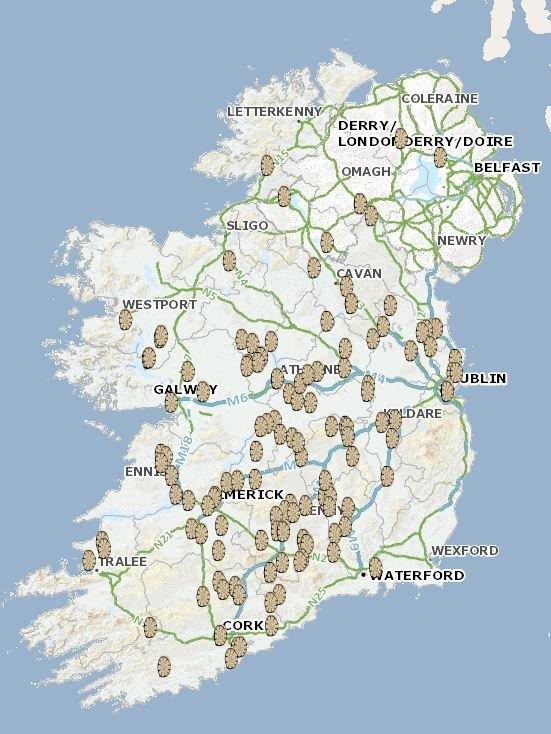Sheela-na-Gigs: Ireland's mysterious genital sculptures
- Published

The Heritage Council Ireland said no-one can be sure of their true meaning or what purpose they served
Much has been written about a series of mysterious, and often misunderstood, stone carvings - more than 100 of which exist on the island of Ireland.
While they're an interesting part of Irish mythology - it is possible you've never heard of them.
After all, a woman brazenly showing her genitals may not have the same fireside appeal as stories of fairies and banshees.
But now the Heritage Council Ireland has created a map of Sheela-na-Gigs., external
According to the organisation, the sculptures are normally found in medieval tower-houses, churches and holy wells.
'Enlightened debate'
But no-one can be sure of their true meaning, or what purpose they served.
Michael Starrett, Heritage Council chief executive, said the aim of producing the map was to learn and explode myths that had "grown up and allow contemporary and very enlightened debate to occur".
"Our Sheela-na-Gigs deserve no less," he said.
"HeritageMaps.ie is a fantastic tool for learning, discussion and interpretation, making cultural data available to everyone."
Beatrice Kelly, Heritage Council head of policy and research, said Sheela-na-Gigs were "very evocative symbols of the feminine in old Irish culture".
"Their prominent positions in medieval churches and castles attests to the importance of the female in Irish society," she said.
"As modern Ireland strives for equality in all aspects of life this map can help us all to understand the important place women have traditionally held within our culture and society."
'Vernacular folk deities'
Shane Lehane, a folklorist at University College Cork (UCC), said up until recently they were seen as "figures representing the evils of lust or as ways of averting the evil eye".
"More convincing reassessments have reinterpreted the Sheela-na-Gig, in line with the Cailleach (old woman or hag), as belonging to the realm of vernacular folk deities associated with the life-giving powers of birth and death," he said.
"Placed with the cycles of both the natural and agricultural year and the human life cycle, she can be regarded as the embodiment of the cycle of fertility that overarches natural, agricultural and human procreation and death."

HeritageMaps.ie has produced a list detailing the location of all known Sheela-na-Gigs on the island of Ireland
Mr Lehane said the Sheela-na-Gigs also had a connection to Ireland's patron saint, St Patrick.
"The key to understanding the inherited notion that St Patrick had a wife, Sheela, is to explore the hugely interesting archaeological manifestation that also bears her name: The Sheela-na-Gig," he added.
Explaining how the map was created, Pat Reid from HeritageMaps.ie explained how the map was created.
"We used publically available National Monuments Service open-data to create the base for this map," he said.
"We augmented this with images and information gathered from the museum sector and Sheela-na-Gig academics and enthusiasts.
"This Sheela-na-Gig dataset is just one of many bespoke datasets we hope to provide in this manner. Our aim is to create interest and awareness, and to facilitate further research, in the varied and diverse elements of our cultural heritage."